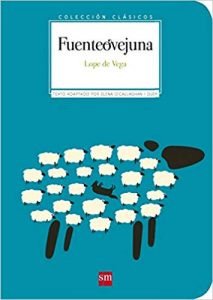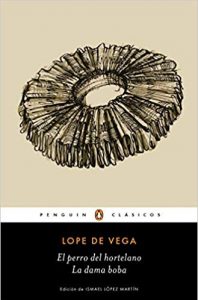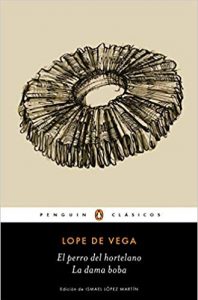There was a time (no less than in the Golden Age headed by Cervantes) in which the reality shows were carried out by people of substance, with excellent cultural baggage. And that could be edifying, at least in lexical and semantic terms. The intention was what it was, to offend opponents as well-read as oneself. Undoubtedly a great euphemism for life as a similar tragicomedy in such disparate cultural settings.
Because how can we forget the literary battles between Lope de Vega, Quevedo and Góngora, with results for eternity such as «the man stuck to the nose" or the "I will spread my verses with bacon; why don't you bite them gongorilla»Which would come to represent other current phrases of other reality shows such as« I am dying of love »or« who puts his leg on me so that I do not raise my head »(as you can see much less ingenious but just as laughable from the naive or the absurd ).
But today we stayed with a Lope de Vega that in his days he had the worst reputation of the three mentioned above for his licentious outlook on life. However, it is for me Lope de Vega who can be most enjoyed in his extensive prose bibliography. Scripts made novels to stand out on the tables with a life of their own and to make the golden century theater its greatest exponent.
Top 3 recommended books by Lope de Vega
Fuenteovejuna
When a play reaches the same intensity interpreted or simply read, it is that its invoice and its essence transcends the format. Many students read (I suppose they still will) this work at some point during our trip to school or institute.
And my memory is of a reading that interested us all because of its value between the epic and the human. Revolution of revolutions in a traditional Iberian world in which the community finally comes together to defend itself, to become ungovernable in the face of injustice, to stand up like that all or none capable of intimidating the strictest of rulers. Because without a people there is no government. And if the people unite under the premise of social justice, any enemy can be dwarfed to humiliation. A work reissued year after year, with the certainty that a classic like this reaches that plot, that eager redoubt for freedom, increasingly lowered no matter how much we weigh.
La dama boba
Only a guy who cut short his love life by adjusting to his promiscuous tendency above any moral imperative (a kind of Julio Iglesias of the golden age), could write a brilliant work of love to make that, love shine, on any stage in the one who acted under this script.
Beyond the idealized and perennial love between two lovers, Lope de Vega is able to address the transformative aspect of a new love to escape the shadows that lurk at different times. Romanticism, the platonic as different opportunities to change the same life, but not always coming together in a single moment to trace a single path. It is not that Lope de Vega makes explicit what is promiscuous. Rather, it is about the suspicious reader, the public capable of discovering characters back who can once again love, for the second or third time, with the sensual provocation of someone who already knows themselves in that territory of the carnal, poetically evoking immortality. spiritual while the streams of orgasm are buried.
El Perro del Hortelano
Undoubtedly, Lope de Vega awakened that new brightness of the theater made a national comedy with a spirit of transcendence, far above the vaudeville that always existed in theatrical representation.
Lope de Vega has nothing to envy his contemporary Shakespeare only that the greatest symbolism of Shakespeare, his ingenuity to paint the most epic scenes perhaps to stick more to a more exclusive audience. Lope de Vega focused on a realism that extolled that spiritual point but which, limited to the popular, seemed unable to reach romantic or existentialist heights of Shakespeare's universe.
But in honor of the justice of ingenuity, it can be said that both magnified a theater that from its works gained the value of a compendium of fine arts, perching above the simple declamation as a soliloquy to transform everything into interpretation, into argument, into dialogues ... in theater after all. In the dog in the manger, Lope de Vega seemed to disguise himself a bit as Shakespeare and approached the aristocratic to touch other types of higher emotions.
Only in the end it seemed as if he was more interested in the mixture of the popular noble to disturb, make comedy and disguise once again the impossible loves made feasible from his prism. In the same volume as the one below, published in 2019, are the two previous works.



